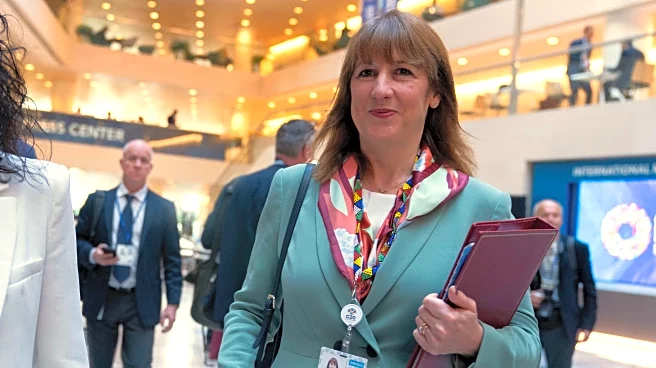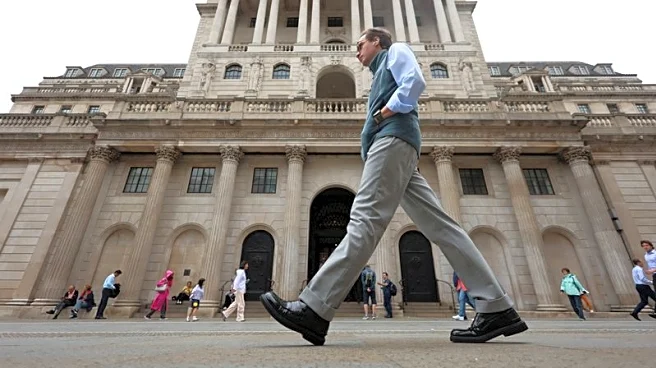What's Happening?
The British pound experienced a decline against both the dollar and the euro following the release of consumer price inflation data from the United Kingdom. The annual rate of inflation held steady at 3.8%
in September, contrary to expectations from economists polled by Reuters who anticipated a rise to 4%. This stability in inflation rates has influenced currency movements, with Sterling GBPUSD down 0.23% against the dollar at $1.3342 and 0.3% against the euro at 86.99 pence EURGBP.
Why It's Important?
The stability in the UK's inflation rate is significant as it impacts monetary policy decisions by the Bank of England, which has been actively adjusting interest rates to manage inflation. The unchanged inflation rate suggests that the Bank may continue its cautious approach, potentially affecting future rate cuts. This has broader implications for the UK economy, influencing investor confidence and currency valuation. The dip in Sterling reflects market reactions to the inflation data, affecting international trade and investment flows.
What's Next?
The Bank of England's upcoming decisions will be closely watched, especially with the November Budget approaching. Analysts are speculating on whether the Bank will maintain its current rate or opt for further cuts. The stability in inflation could lead to a hold on rate changes until the end of 2026, depending on economic conditions and fiscal policy outcomes. Stakeholders, including businesses and investors, will be monitoring these developments to adjust their strategies accordingly.
Beyond the Headlines
The current economic situation in the UK highlights the delicate balance central banks must maintain between controlling inflation and supporting economic growth. The Bank of England's cautious approach reflects broader concerns about global economic stability and the potential impacts of geopolitical events. Long-term shifts in monetary policy could influence the UK's position in international markets and its economic resilience.













